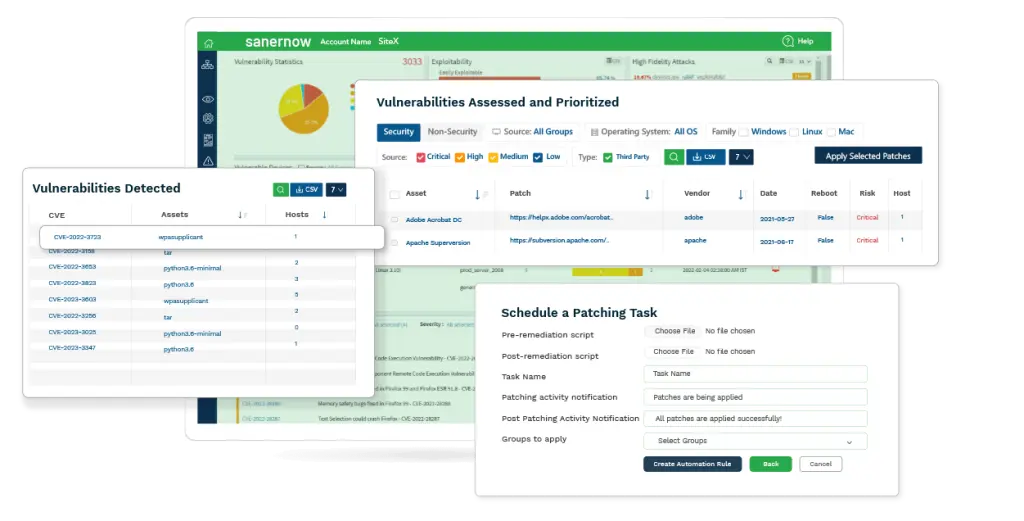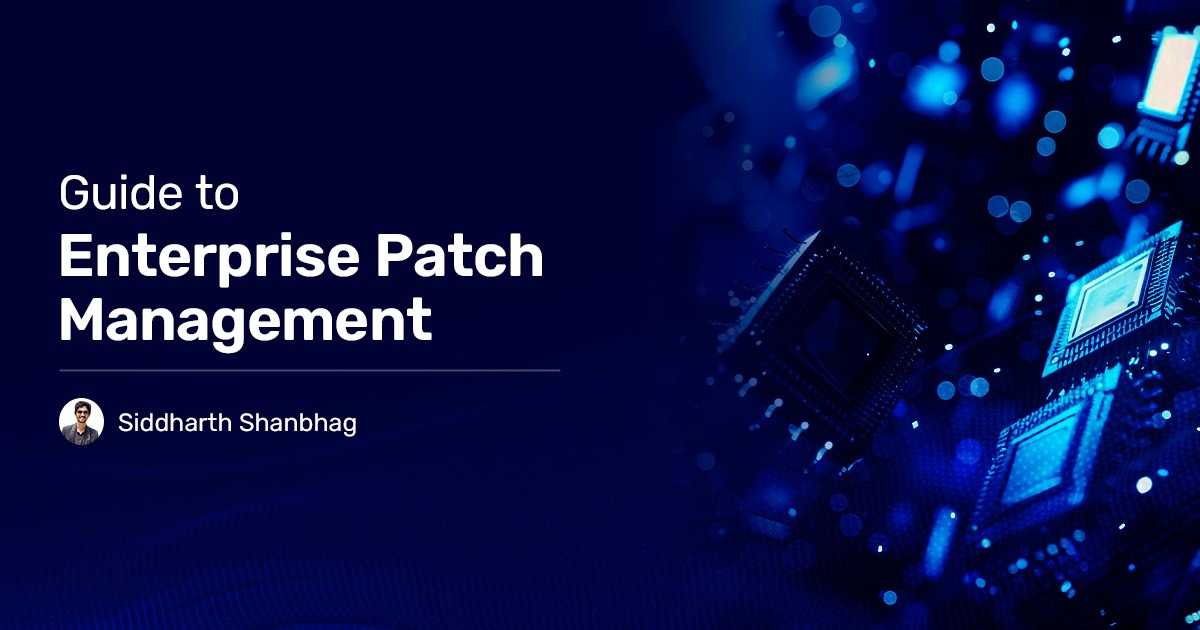Patch Management stands as a critical component of a robust cybersecurity strategy. It involves the timely updating of software to fix vulnerabilities, enhance functionality, and ensure overall security.
For enterprises, the importance of enterprise patch management tool cannot be overstated. Unpatched systems are a gateway for cybercriminals, leading to data breaches, operational disruptions, and financial losses.
Challenges Faced By Enterprises While Patching
Despite its importance, enterprises encounter several challenges in patch management:
- Complex IT: Large organizations have diverse IT environments, including legacy systems, cloud services, multiple operating systems and third-party applications. Managing patches across this diverse landscape is difficult.
- Resource Constraints: IT departments often face a shortage of skilled personnel and budget limitations, making it difficult to keep up with the constat flow of patches.
- Downtime and Disruptions: Patching requires system reboots or downtime, which disrupts business operations. Balancing the need for security with minimal impact on productivity is a challenge.
- Patch Testing: Testing patches before deployment is crucial, as unverified patches can cause compatibility issues or introduce new vulnerabilities.
- Lack of Visibility: Without proper tools, it will definitely be challenging to track which systems need patches and whether patches have been successfully applied.
The Importance of Patch Management for Enterprises
Patch Up or Perish: Why Patch Management is Essential for Your IT Fortress
- Cybersecurity: Patches address vulnerabilities that cybercriminals could exploit. Regular updates prevent potential breaches and protect your enterprise’s sensitive data from compromise.
- Compliance: Many industries have regulations mandating regular patching, non-compliance can lead to hefty fines and legal issues. However, staying up to date with patches helps your enterprise avoid these costly penalties.
- System Stability: Patches often include bug fixes and performance improvements, ensuring that your enterprise’s systems run smoothly and efficiently. Also, this stability is key to maintaining productivity and avoiding disruptions.
- Reputation: Data breaches severely damage an organization’s reputation. Effective patch management minimizes this risk, preserving the trust and confidence of your customers and partners.
Best practices of enterprise patch management
To overcome these challenges, enterprise need to adopt the following best practices:
- Automate Patch Management: Utilize automated tools to scan for vulns and deploy patches. Automation reduces manual effort, minimizes human error, and accelerates the patching process.
- Regular scanning and Monitoring: Conduct regular scans to identify vulns and ensure all systems are up to date. Continuous monitoring helps in quickly identifying and addressing new threats.
- Prioritize Patches: Not all patches are equally critical. Prioritize based on the severity of the vulnerability, the risk to the organization, and the criticality of the system affected.
- Patch Management Policy: Develop and follow a patch management policy. Also, the policy should have roles and responsibilities of effective patching IT & security team must follow.
- Training and Awareness: Educate IT staff and end-users about the importance of patch management. Regular training ensures everyone understands their role in maintaining security.
SanerNow Patch Management: One Console for All Your Patching Needs
- Automatic Patching: Automate patching from detection, prioritization, and testing to scheduling deployment. SanerNow PM eliminates the need for manual efforts and allows the creation of rules for automation.
- Remote Patching: Have a cloud-based console with one view to easily deploy patches across global IT.
- Multi OS support: SanerNow PM supports auto patching for all major operating systems like Windows, Linux, Mac and 550+ third party applications.
- Rapid Patch Support: SanerNow PM tool provides the latest patches from all supported vendors within 24 hours and is pre-tested and ready for deployment.
- Effortless Patch Rollback: Patch rollback is made easier with SanerNow automated patch management tool to avoid disruptions in business operations.

Conclusion
Enterprises must prioritize patch management as a critical component of their cybersecurity strategy. With SanerNow, you protect your systems from vulnerabilities, comply with regulations, and maintain operational stability. SanerNow PM stands out as a comprehensive solution that not only simplifies but also strengthens the patch management process, enabling enterprises to stay ahead of cyberattacks.


